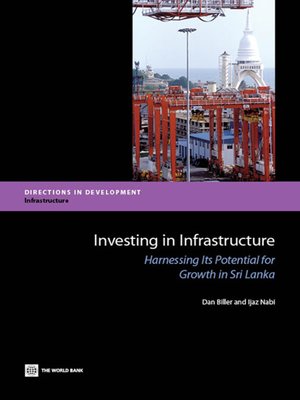Investing in Infrastructure
ebook ∣ Harnessing its Potential for Growth in Sri Lanka · Directions in Development
By Dan Biller

Sign up to save your library
With an OverDrive account, you can save your favorite libraries for at-a-glance information about availability. Find out more about OverDrive accounts.
Find this title in Libby, the library reading app by OverDrive.



Search for a digital library with this title
Title found at these libraries:
| Library Name | Distance |
|---|---|
| Loading... |
The liberalization policy implemented in the 1970s helped Sri Lanka to achieve middle-incomecountry status in 2010. Sri Lanka is now poised for the next phase of economic growth and productive employment. The two principal drivers of investment for sustained high economic growth are
international competitiveness for export-led growth and urbanization. Crucial to both is efficient infrastructure that shortens the international supply chain and brings about agglomeration benefits. Investing in Infrastructure: Harnessing Its Potential for Growth in Sri Lanka has two objectives:
⢠To improve understanding of the infrastructure sectors, including their current state and performance, future development needs, investment requirements, and financing gaps.
⢠To provide policy makers with a sound analytical basis for prioritizing investments and designing policy interventions to mobilize funds and using them effectively for infrastructure development. Investing in Infrastructure: Harnessing Its Potential for Growth in Sri Lanka assesses the countryâs infrastructure endowment and performance, analyzes the contribution of infrastructure to economic and spatial development, and outlines investment needs and strategic priorities consistent with the framework of the Mahinda Chintana. Further, it provides a cross-sectoral analysis of the major infrastructure cross-cutting themes, including the links among infrastructure, poverty reduction, and economic growth; the infrastructure institutional and regulatory frameworks; the issues surrounding planning, coordination, and financing of infrastructure projects; and the potential of private-sector participation in infrastructure financing and service provision. Finally, it suggests policy adjustments to improve efficiency and expand infrastructure services where needed.







